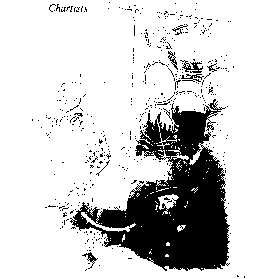
61
The confusion at Westminster reflected the situation in the country. There were outbreaks of
machinebreaking and riots: people exploited at the factories
by factory owners and left unemployed by
machines replacing them, were outraged;
they smashed machines blaming Ned Ludd for it and bearing his
name – Luddites, wearing masks and damaging the factories.
The Parliament Reform came together with railways. The Manchester and Liverpool Railway was opened by
the Duke of Wellington in 1830. George Stephenson built a locomotive
–
"the
Rocket", which reached a
maximum speed of fourty eight kilometres per hour.
The technological revolution was going on strengthened by social reforms that were obviously lagging
behind.
The reformed Parliament passed a number of progressive acts, due to Lord Shaftesbury the first effective
Factory Act was passed, limitting the hours worked ) by children in cotton factories to nine, prohibiting their
employment under nine years of age, and appointing inspectors to see that the decisions were enforced.
The state assumed also some responsibility for the poor. According to the Poor Law all the able bodied poor
were to go to the workhouses where the conditions were terrible. It was described by Ch. Dickens in his novel
"Oliver Twist". The working classes were infuriated by the injustice and inhumanity of the Poor Law and
demanded more radical reforms.
In 1838 the first petition was drawn up by leaders of first association of workers, which was called the
People's Charter. It included six main demands for changes: the vote for all males, parliamentary
constituencies of equal size, voting by secret ballot, a salary for MPs, no property qualifications for MPs,
annual Parliaments. All these reforms seemed revolutionary at that time.
The Chartist movement was supported by the working people, but it had its ups and downs. The first Charter
was rejected by Parliament in 1839, which was followed by protests of the working people and repressions by
the Government. The Chartist leaders were arrested; the Movement was defeated when the second Petition was
also rejected by Parliament in 1842.
The revival of Chartism in 1848 coincided with the Revolution in Europe and with nationalist demands of the
Irish, but the third petition having been rejected, Chartism began to decline and grew into the cooperative and
trade unionist movements.
The Parliamentary struggles of the Tories and the Whigs, the working classes struggle for social rights and a
better life, were all developing against the background of a drastic change in the Monarchy. The only daughter
of the Hanoverian Duke of Kent turned out to be the only heiress to the British throne, and after the death other
uncle William (William IV 1830-1837) 18 year old Victoria became Queen (1837-1901). Her first Prime
Minister, Lord Melbourne, taught the young Queen the duties of the constitutional monarch. The accession of
Queen Victoria came at a difficult time: the Whigs lost their popularity and the majority in the House of
Commons; the Hungry Thirties passed into the Hungry Forties, and the alternative to the Whigs polices was the
new Conservative Party, created by R. Peel. Peel's financial reforms brought revival to the country (1844), and
legislation to protect factory and mine workers improved their conditions, but the disaster came with the poor
harvests in Britain and Ireland. Famine in Ireland (1845) convinced Peel that the Corn Laws should be repealed

